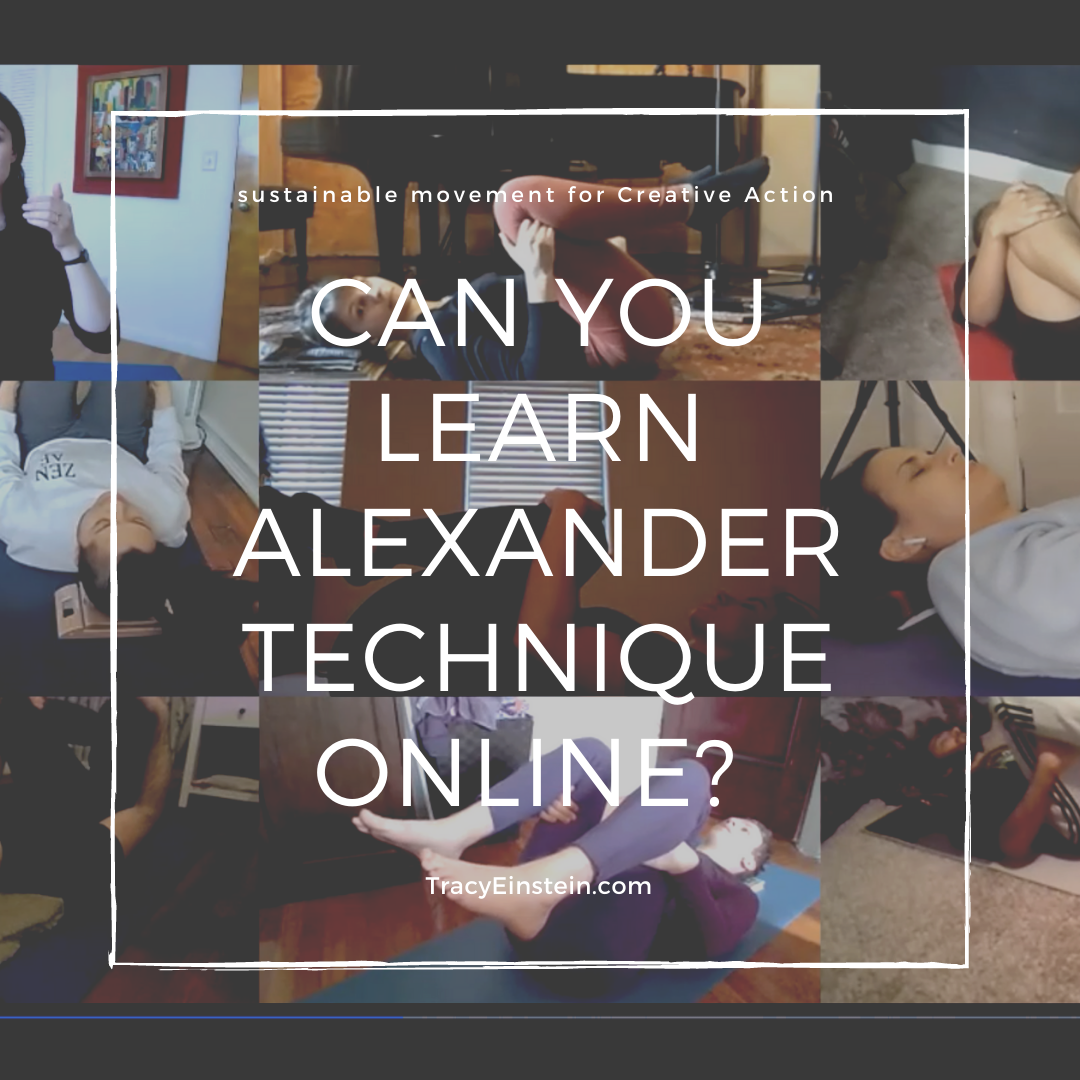Can You Learn the Alexander Technique Online?
It’s the middle of teaching an Alexander Technique class at an acting school in NYC, I received an email:
“Out of an abundance of caution, all hands-on work should stop immediately”
For the next 14 months, I taught all my classes- private and group sessions- on a program I had never used before that seemed to be designed for corporate meetings - Zoom.
I know this story is familiar to you. I know you probably experienced something like it yourself. As the world dealt with stress, grief, unknowns, and incalculable loss of the COVID-19 pandemic, teachers all over the world labored to translate their lessons into an online format.
There were initially a lot of questions about whether the Alexander Technique would actually translate.
Typically, it involves a lot of touch work. The Alexander Technique touch is intended to help get you out of your habitual experience of your body, and into a new psychophysical patterning. In theory, how could this work without touch?
Alongside my truly brilliant students and colleagues, I discovered how much can translate through the screen, and also some ways that the Alexander Technique online offers unique benefits...
Self Touch
Yes, the trained hands of a practitioner are priceless, but there’s also a lot you can do for yourself if ya know what I mean. Self-touch has been shown to use the same part of your brain responsible for interoception (sensing what’s going on inside). So starting a warm up with self-touch can heighten that internal tracking, proprioception, awareness available to you. This is especially useful if you’re a person who isn’t sensing much at all in your own body. For students who have a lot of proprioceptive availability, self touch can offer caring attention, relief, and a reference point for accurate body-mapping.Words
Your mental schema has a huge influence on how you use your body- whether or not you’re aware of what that mental schema is... Zoom has necessitated more discussion, and some of the internal assumptions students are functioning with come to the surface more clearly. Sometimes, simply massaging that with discussion and and guidance can smooth things out into clarity, and it gets to the root of an issue you’re facing psychophysically.Sound
I found this year how much vibration and making sound helps me connect to my center, and discover dynamic alignment on a very visceral level. Some people aren’t so comfortable with making sound in the studio, but on zoom you can just hit “mute!”Increased student agency
Without the hands-on work, a student is challenged to bring their whole self to the table, without leaning so much on the practitioner. (I do believe that is a totally valid way to use a session by the way…AND I noticed some big leaps in understanding in some students who had mostly been engaging on a ‘letting go’ level, and missing the part of the work that involves taking charge of integrating and learning).Access
This goes without saying. No matter where you live, as long as you have access to the internet & a device, you can get some support. And if you’re a busy parent (or a busy anything), you don’t have to add additional commute time to your self-care.
I’ll continue to see students online and as I return to in person work I’ll take all this with me, as well as a reverence and appreciation for the ability to safely touch you!
With love and appreciation,
Tracy
